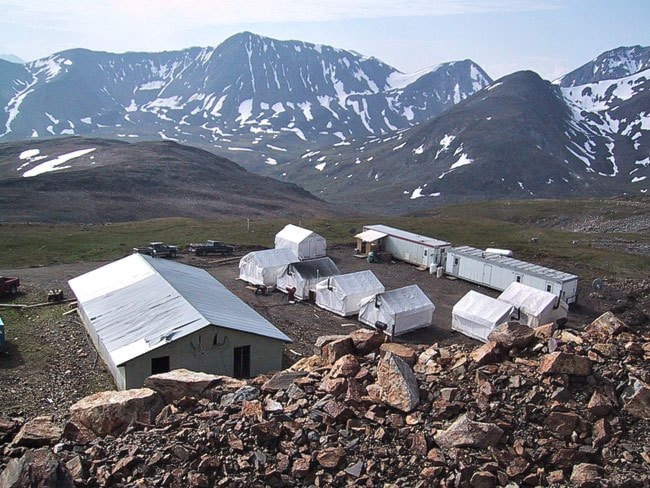The Yukon Environmental and Socio-economic Assessment Board looks set to recommend that the Mactung mine project go ahead.
A draft screening report released earlier this month found several issues with the proposed mine from an environmental perspective, but suggested that the project proceed as long as these outstanding problems are dealt with.
“We’re happy that we achieved that stage,” said Stephen Leahy, president of North American Tungsten. “There were a lot of good points in their comments that we will take into advisement and move forward.”
The proposed mine is located about 250 kilometres northeast of Ross River, off the North Canol Road near the Northwest Territories border.
The mine is expected to operate for 15 years, including two years for construction and two years for closure and reclamation.
It will employ approximately 250 people during the construction phase and 150 people during the operational phase.
The site holds an estimated 33 million tonnes of ore and is one of the world’s largest-known tungsten deposits.
Tungsten is widely used to make tools for metalworking, woodworking, mining and construction industries because, when alloyed with carbon, it forms a metal three times stiffer than steel.
North American Tungsten also operates the Cantung mine site, 300 kilometres from Watson Lake, just over the Northwest Territories border off the Nahanni Range Road.
Production at that mine is expected to end in 2014.
Before it goes ahead with the proposed Mactung mine, the assessment board has asked the company to revisit the possibility of using an existing road through the Northwest Territories to access the site rather than building a new one through the Yukon.
The existing road, 11 kilometres long, is located almost entirely in the N.W.T., and would require upgrades in order to be used for the mine.
The company looked into the possibility of using that road several years ago, said Leahy, and determined that it would be in its interest to avoid dealing with multiple jurisdictions through the permitting process.
Instead, the company proposed building 31 kilometres of new road and upgrading 19 kilometres of existing road located entirely in the Yukon.
Assessors determined that the company’s wish to avoid dealing with the N.W.T. was not a sufficient excuse to allow it to build the new road.
The board said that the company must use the existing road unless it cannot achieve the proper permits through the N.W.T., or it can show that using the existing road would result in more detrimental effects than building the new one.
North American Tungsten has already begun to research the permitting process to use the existing road, said Leahy.
Lewis Rifkind with the Yukon Conservation Society said that assessors did a good job highlighting the issues associated with the proposed mine in its report. However, the society disagrees that the project should have been granted approval.
“We respectfully disagree with YESAB that the project is ready to proceed as long as those issues are dealt with,” said Rifkind. “We feel it’s not ready to proceed because those issues haven’t been dealt with.”
Besides the question of the access road, there are significant problems related to water that the company has yet to deal with, said Rifkind.
In order to get through the environmental approval process, a company must come up with a water balance model.
“You have to get a handle on how much water is coming in, how much is gong out, how much has to be treated and to what standard,” said Rifkind.
However, the company’s proposals rely too heavily on data collected far away from the site to generate its model, and therefore risk making serious errors in calculations, he said.
After it has cleared the assessment board, the company will still have to go through various permitting processes, including the Yukon Water Board, so those water issues will ultimately have to be dealt with, said Rifkind.
But he’s not sure who will ensure that the company makes a serious effort to meet the other recommendations and conditions put forward by the assessment board’s report, he said.
The draft report is open for public feedback on YESAB’s website until Nov. 13. The board will then issue its final recommendations.
In a “good case scenario,” the company hopes to have its permits approved by the end of 2013.
The company also needs to secure financing for the project.
Leahy hopes that as the proposal proceeds through the permitting process investors will be attracted to the project.
“We really look forward to working with all Yukoners, certainly, and we look forward to having our mine in production because it is going to be a very strong economic engine for that part of the world,” he said.
Contact Jacqueline Ronson at
jronson@yukon-news.com
